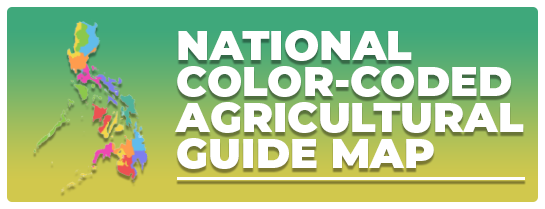Best tilapia strains: UPV SpiN Tilapia with YY hybrid Developed for Enterpise
Posted by: RAFIS DA6 | Posted at: July 24, 2025
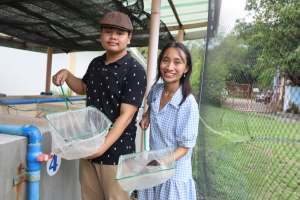
As Filipinos would consider tilapia farming as one of the major livelihood in the country particularly in rural coastal areas, it also plays a significant role in food security and the aquaculture industry.
The huge contribution of young researchers in the field of aquafarming development produces a significant effect to the fishing industry in the region. Three young students from the University of the Philippines Visayas (UPV), Institute of Aquaculture – College of Fisheries and Ocean Sciences made an innovative technology in fish farming to improve the production of Tilapia.
Miss Lyny Giovy Cainglet, Ralph Jasil Escanillas and Vince Justin Dela Cruz made a very significant addition in the field of aquaculture based on UPV- Saline – Tolerant Population of Improved Nilotica (SpiN) and strengthened by YY hybrid strain project which optimizes “ ALL MALE” tilapia through natural breeding.
The team of Cainglet, Escanillas and Dela Cruz simplified the technology. The all-male UPV SPIN Tilapia fry- is a saline-tolerant hybrid developed for brackish water environments, it can also be grown in brackish water cages which offers superior benefit to small scale fishers and coastal fisherfolk because of its cost-effectiveness and simplicity.
For almost a year of research and study with the help of UPV fishery research specialist who became their mentors, Mr. Sanny David Lumayno, Fredson Huervana and Christine Faith Germinal, were able to see the economic benefits of SPIN technology to the fish farmers.
Representing their school, as proponents of the SPIN Tilapia Enterprise the team were able to showcase the technology through the Department of Agriculture Western Visayas – AMAD Young Farmers Challenge (YFC).
Their struggle as students with farmer parents made them more resilient accompanied by perseverance to study and create a more systematic technology in aquaculture development. Their main objective is to increase production and cut off cost in farming.
Rooted from their parents quest for success, Lyn, Mark and Vince were able to sustain their degree in Bachelor of Science in Fishery at UPV-Miagao campus. Gaining experience from their learnings in fish farming research development as well as extension programs wherein they were exposed to different fishing communities all throughout the region.

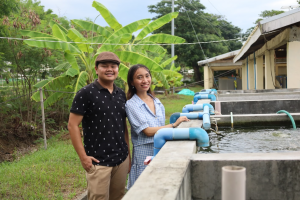
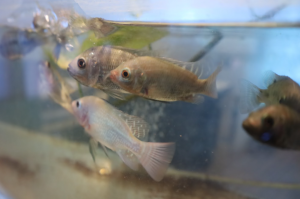
Identifying the gap that creates issues among the fisherfolk, it triggered the team to create the study on SPIN Tilapia Enterprise. These includes technology used in production, continues study on how to increase survival rates and growth.
They would encourage fish farmers every time they would visit the coastal community to grow tilapia in fresh water and try the new SPIN hybrid Tilapia species strain developed by the team to sustain their growth in fresh water and also in high salinity environment
Complementing the SPIN Tilapia technology is the YY breed all-male tilapia which is larger in size. The YY male tilapia is scientifically bred to have desirable traits for market consumption, which is a product from scientific research done by the UPV researchers. Encouraging the fishpond owners to try new ways in producing the new hybrid strain made the team strive to get the enterprise running. As they sell the fry to fishpond owners for large scale production the initiative of the team persisted.
On 2024 the Department of Agriculture – Agribusiness and Marketing Assistance Division (DA-AMAD) opened the Young Farmers Challenge (YFC) in which the UPV team of researchers and co-founders of the UPV SpiN Tilapia Enterpise, Cainglet, Canillas and Dela Cruz proposed the winning agri-BMC . The DA-AMAD , Young Farmers Challenge, they granted the researchers an initial capital of Php 250,000.
They ventured into this enterprise to help the small scale fishers. Tilapia is also an easiest fish to culture while helping the breeders to have an efficient way of producing more through the YY technology.
The bigger challenge they face is the acceptability and transfer of technology. Traditional fisherfolk are apprehensive in taking a chance to venture into new things. Thus, information and knowledge transfer is very important said Lynly Cainglet.
Moreover, they carry the perseverance, educating young fishers and breeders on the simplicity of the feeding process and on how to adjust the salinity factor of the tilapia that they want to breed.
Feeding of Spin tilapia is comparatively the same with the traditional way somehow with the same diversity is in the kind of fingerlings produced. The fry is basically sold to the fish farmers for mass production.
The study lasted for two years until it was structured into a strong foundation (patented technology) conducted by different researchers of UPV and continuously enhanced as the team conducted a deeper study on the YY strain.
Being a DA and DOST PCCARD funded project they were more motivated to accomplish what has been started. The business side was opened as enterprise. Making money out of SpiN tilapia and YY fingerlings made the team more engrossed in sustaining the business.
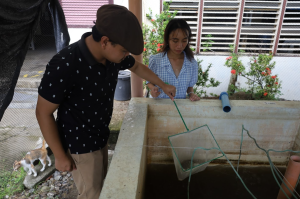
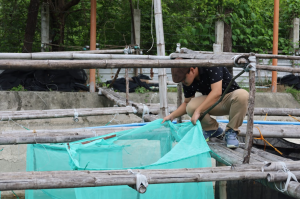
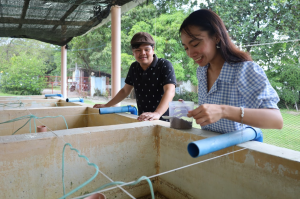
Taking turns in production by batches they were able to sustain the flow . With two target hatcheries, medium to large scale and the smale scale hatcheries. Reconstruction of ponds for small scale hatcheries is now a priority and going into production of YY for medium to large scale hatcheries.
The mentorship coming from the UPV research specialist gave a boost on the teams resiliency to a breakthrough in aquaculture development.
Getting ready to introduce the technology to the public, YFC mentor Christine Faith Germinal, emphasized the need of the university to alleviate the research coming from the university and see the impact in the society. The collaboration between the DA-AMAD and the SUCs is aligned with the vision of being partners heading to its goal of sustainable agri-aqua culture development in the Philippines.
Tapping the marginalize sector in agriculture will be the best result that the university can get from this technology development transfer. It may seem difficult to coincide science and technology but it is indeed inherent to the UP Visayas flagship course which is Fisheries and Ocean Sciences.
A simplified business model was introduced to the team thus the aim of increasing the livelihood income of the small to medium and large scale fishing communities will greatly bridge the gap between science and business.
Bringing to the agriculture sector the impact of business and science rolled in one, the team is very much positive on the impact it could make in the lives of the farmers and fisherfolks of the region and the whole aquaculture industry.###
Text by Joan Capaciete and Photos by Georgia Mae Cordova (DA-RAFIS 6)





